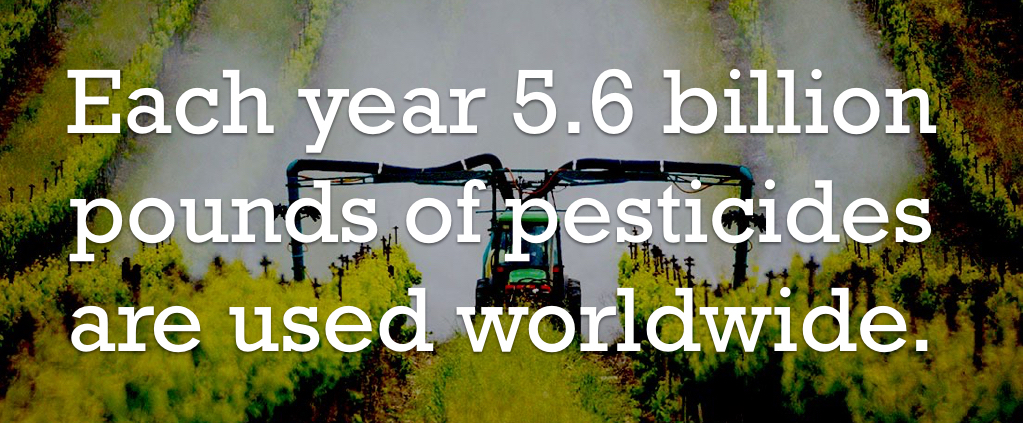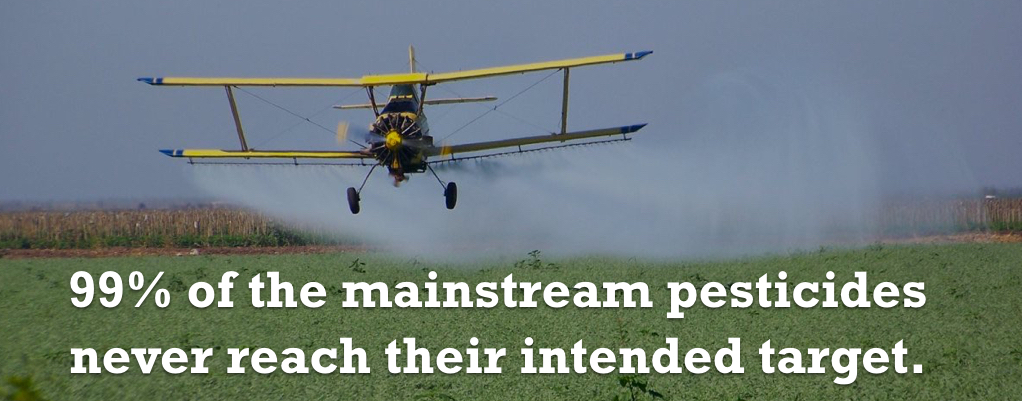Understanding the main principles for pesticide use as well as the benefits of natural and organic alternatives is essential sound decision-making in modern agriculture. While synthetic pesticides have proven effective since their mainstream use during the green revolution, their harmful secondary effects have become a serious concern over the last decade.
The green revolution in the 60’s brought an industrialized agriculture that allowed the doubling and sometimes even tripling of yields around the world. One of the main factors for this achievement was the use of synthetic pesticides, chemical compounds used to kill and manage undesired insects, weeds and fungi that threatened the maximum growth of crops.
After the Second World War ended, all the chemical technology, the discoveries and developments used for warfare, needed a new function. This gave birth to the first pesticides.
The main pesticides have been organophosphates, DDT, organochlorine, and carbamates. Through the years, the toxicity, human and environmental health concerns have banned and phased out some of them while others, like neonicotinoids, have been designed and produced in an effort to reduce their unintended damage.

Today, more than 5.6 billion pounds of pesticides are used worldwide every year to manage and kill pests, including insects, weeds and fungi. The application of chemicals to reduce the pests that threaten to destroy food and non-food crops comes at a surprising annual cost of USD $ 40 billion. Even with these expensive measures, pests are responsible for the annual loss of 37% of all potential crops yields. This represents a USD $ 122 billion in lost output every year; a cost that could double if pesticide use were abandoned completely.
More and more scientific studies and international organizations such as the World Health Organization (WHO) are confirming the detrimental health effects that some of this pesticides have brought upon humans, especially children. These range from neurodevelopment and congenital defects, reproductive and respiratory deficiency to different forms of cancer and chemical sensitivities. While an actual worldwide appraisal on the full health effects is complex at best, the WHO has estimated more than 25 million cases every year with acute pesticides poisoning.
Another serious concern has been the environment. Given that only 1% of the mainstream pesticides reach their intended target, the scale of pollution is unmanageable. Every aspect of the environment, water, air, soil, insects, amphibians and mammals, has suffered damage and loss on account or these chemicals. In The US alone, the social and environmental costs of pesticide use reached USD 10 billion in 2014.

A relatively new area of discovery and development are biological pesticides or biopesticides. These are pest management intervention options that no longer rely on synthetic chemical compounds, but rather source their product in natural plants and minerals and the use of microorganisms, whether predatory or parasitic. With minimal toxicity and greatly reduced side effects, the market for biopesticides, such as pyrethrins, rotenone and particularly neem is worth approximately USD $3 billion, and is expected to reach $4.5 billion by 2023.
Neem extracts and neem oils have been proven as effective insecticide, feeding deterrent, repellent, growth inhibitor and general pesticide for more than 500 noxious pests. Furthermore, it has been confirmed as non toxic for beneficial species, pollinators and microorganisms and non target birds amphibians and mammals, including humans.
Safe and effective pest management strategies are necessary maintain modern agriculture’s ability to feed the world today and in the coming years. Although synthetic pesticides once provided an answer, saving one billion people from starvation, we now know the consequences of these dangerous chemicals. Today, technology, science and traditional practices are providing us with an efficient alternative, using natural plant and mineral derivatives in addition to comprehensive methods to managing pests and improving production yields.